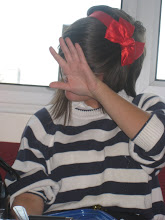
Twenties Daywear.

Thirties Daywear.

Fifties Daywear.

For now I am thinking that I will pick a few periods of time and do wallpapers to go with each time. It consists of Early Fashion, Twenties, Thirties etc...right up to the nineties.
I have researched them all and looked for inspiration in the textiles, I concentrated on picking a few eras that have distinctive features and noted them down for when I design the papers.
The chosen Eras:-
Early Fashion
The Twenties
The Forties
The Fifties
The Sixties &
The Seventies.
I will put them with the appropriate design media that I want to use. Each wallpaper will be done differenly, showing a different print technique. I will have to do as many as I have time for:
- Screenprinted
- Screenprint with copper foil
- Screenprint with flock
- Screenprint then sewn
- Lino design screenprinted
- Possibly embossing
I've also had a little look at Vivienne Westwood's website as she is reknown for some of her clothes being designed like those from an edwardian period.
One other really famous print pattern I could think of was Paisley's droplet-shaped vegetal motif, similar to half of the T'ai Chi symbol, the Indian bodhi tree leaf, or the mango tree. The design originated in India and spread to Scotland when British soldiers brought home cashmere shawls. From roughly 1800 to 1850, using Jacquard looms, the women of the town of Paisley, Scotland adapted the design and wove woolen shawls, hence the design is popularly known as the Paisley pattern. Changes in fashion led to the demise of the shawl bringing hardship to the weavers in Scotland and the originators in Kashmir.
The shape has been widely adopted since then. Although the influence is not clear, the Turkish tughra calligraphic seal strongly resembles the paisley shape. Some design scholars call the distinct shape boteh and believe it is the convergence of a stylized floral spray and a cypress tree -- a Zoroastrian symbol of death and eternity.


No comments:
Post a Comment